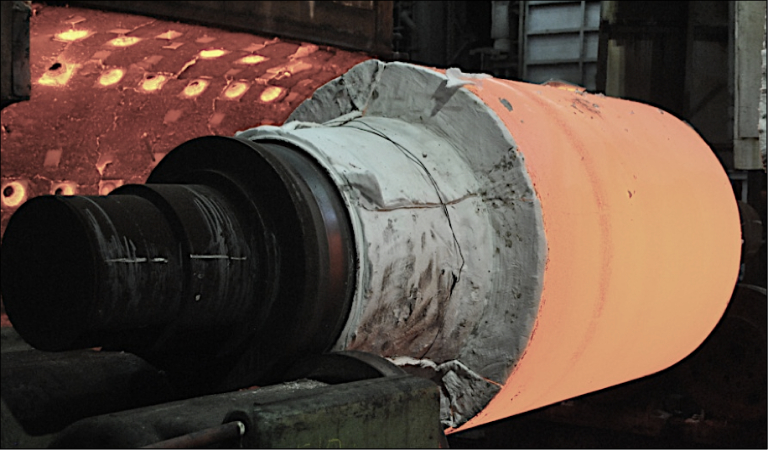High speed cast steel
Advantages: high yield strength, fracture toughness and wear resistance
Typical applications: Rolling mill rolls for both hot and cold rolling
Effects of molybdenum: improves wear resistance and temperature stability
High-speed steels (HSS) are mainly used as tools for cutting or rolling diverse materials at high speed. During operations, the tool material is exposed to high force, intense friction, and high temperatures. Thus, high yield strength, fracture toughness and wear resistance are essential properties of the tool material. Generally, the matrix of the tool material consists of tempered martensite containing various types of hard carbide particles.
Properties of transition metal carbides
HSS alloys belong to the iron-carbon-X multicomponent system, where X represents a group of alloying elements with chromium, tungsten, molybdenum, vanadium and cobalt being the principal ones. The most important changes caused by progress in alloy design concern the type, morphology, and volume fraction of the eutectic carbides.
Tungsten and molybdenum have nearly identical alloy effects, as reflected from the similarity between iron-tungsten-carbon and iron-molybdenum-carbon ternary phase diagrams. On a mass fraction basis, this can be expressed by a “tungsten equivalent” value defined as molybdenum/tungsten=1:2. However, that similarity is very limited because in the typical composition ranges of high-speed steels, the iron-tungsten-carbon diagram presents only M6C carbide, while the iron-molybdenum-carbon diagram also presents Mo2C.
In the composition of M6C carbides, the letter M corresponds to the elements tungsten, molybdenum, vanadium, chromium, and especially iron. Tungsten and molybdenum are dissolved in the same proportion as represented by the composition of the alloy. Eutectic Mo2C carbides form with a rod-shaped morphology and are well dispersed in the matrix. However, it is not advisable to substitute all tungsten with molybdenum, as some of the oxidation and corrosion properties might be diminished. The molybdenum level is ideally set at 4.0-8.0%.
Mill rolls for both hot rolling and cold rolling are a main application area of cast HSS steel. Important for such rolls is a high shore hardness and hardening depth as well as sufficient toughness to avoid unexpected roll failure. Any additional means of increasing the wear resistance in the roll surface prolongs the operational endurance, saving downtime due to roll changes and maintenance in the rolling mill. The hardness of the roll sleeve correlates with the volume fraction of carbides in the steel.
Although an increase in carbon and/or chromium content increases the volume fraction of carbide, wear loss is not necessarily improved. However, the addition of suitable amounts of molybdenum effectively improves the wear resistance of the material. Wear is related to cracking of carbides under service condition, especially that of the protuberating MC carbides at the roll surface. The addition of molybdenum reduces cracking susceptibility of carbide particles due to a toughening effect when molybdenum atoms enrich in carbides. This effect maximizes when molybdenum is alloyed in the range of 4-8%.

Hot mill work roll with tool steel sleeve

Work roll microstructure showing carbide particle populationin the outer roll layer (5CrMo steel)


